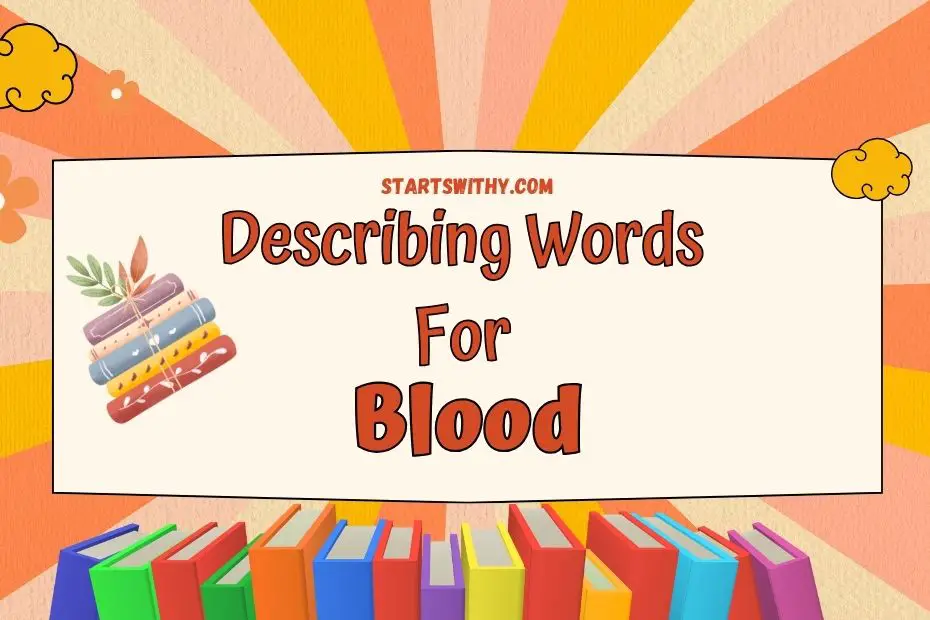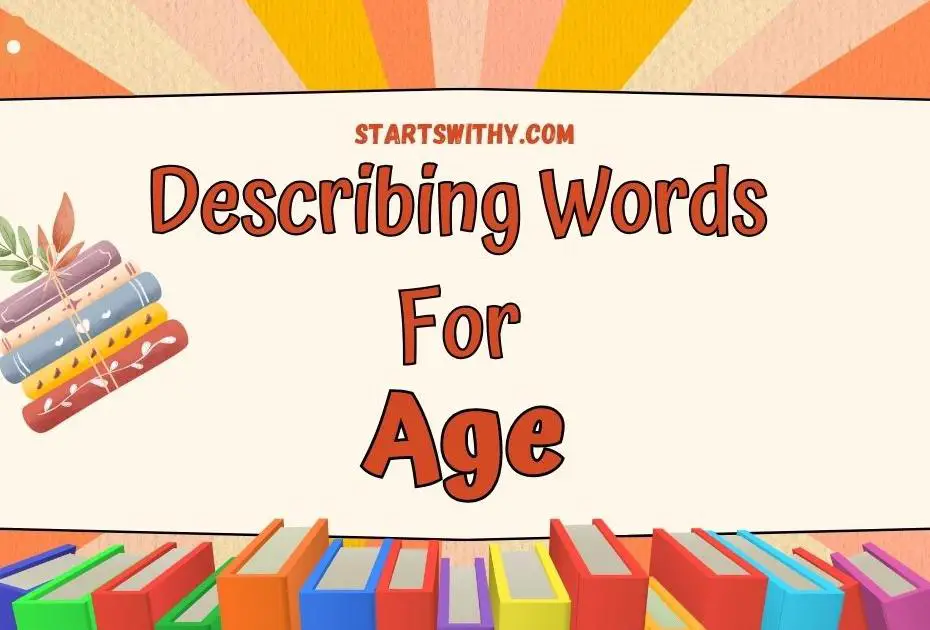When it comes to describing clothes, the right adjectives can make all the difference. As a fashion enthusiast, I know the power of using descriptive words to paint a vivid picture of an outfit. Whether you’re a fashion blogger, a stylist, or simply someone who wants to expand their vocabulary, having a repertoire of adjectives for clothes is essential. In this article, I’ll be sharing some of my favorite adjectives and providing examples of how to use them to describe different types of clothing. So, let’s dive in and discover the world of descriptive words for clothes!
How to Describe clothes? – Different Scenarios
When it comes to describing clothes, there are endless possibilities. The way we describe an outfit can vary depending on the occasion, the style, or even the mood we want to convey. In this section, I’ll guide you through different scenarios and provide examples of how to effectively describe clothes in each situation.
Describing Words for clothes in English
When it comes to describing clothes, using the right adjectives can bring your descriptions to life. Whether you’re a fashion enthusiast or a teacher looking to expand the vocabulary of your young students, having a variety of descriptive words for clothes is essential. Here are some examples of adjectives you can use to describe different types of clothing:
1. Colors
- Bright
- Vibrant
- Pastel
- Dull
- Bold
2. Patterns
- Striped
- Polka-dotted
- Checkered
- Floral
- Geometric
3. Material
- Soft
- Smooth
- Cozy
- Stretchy
- Breathable
4. Fit
- Loose
- Fitted
- Baggy
- Form-fitting
- Oversized
5. Style
- Trendy
- Classic
- Vintage
- Modern
- Bohemian
6. Length
- Long
- Short
- Midi
- Maxi
- Knee-length
7. Details
- Embroidered
- Ruffled
- Buttoned
- Laced
- Embellished
- Formal
- Casual
- Sporty
- Party-ready
- Business attire
Remember, the key to effectively describing clothes is to use specific and vivid adjectives that paint a clear picture in the reader’s mind. By incorporating these descriptive words into your descriptions, you can capture the essence of each garment and make your writing more engaging.
When teaching these adjectives to young learners, it’s important to provide visual examples or use clothing items that are familiar to them. You can create flashcards with pictures of different clothing items and have the students describe them using the adjectives learned. This interactive approach will not only help them expand their vocabulary but also stimulate their creativity.
Adjectives for clothes
When it comes to describing clothes, using the right adjectives is key. Descriptive adjectives not only help us visualize the clothing items better but also add depth and personality to our descriptions. In this section, I’ll provide you with a list of positive and negative adjectives that can be used to describe clothes, along with example sentences to help you understand their usage.
Positive Adjectives for Clothes
Positive adjectives can be used to highlight the attractive features and qualities of clothes. Here are 12 examples of positive adjectives for clothes:
| Adjective | Example Sentence |
|---|---|
| Stylish | That dress is so stylish, it would be perfect for a party. |
| Vibrant | The shirt has vibrant colors that make it stand out. |
| Soft | These pajamas are incredibly soft and comfortable. |
| Elegant | The black suit gives him an elegant and classy look. |
| Trendy | She always wears trendy clothes and keeps up with the latest fashion. |
| Chic | The outfit she wore to the event was so chic and sophisticated. |
| Cozy | The sweater is so cozy, perfect for the cold winter days. |
| Dashing | He looks absolutely dashing in that tuxedo. |
| Flattering | This skirt is so flattering, it accentuates all the right curves. |
| Glamorous | She looked absolutely glamorous in the sequined gown. |
| Polished | The suit gives him a polished and professional appearance. |
| Comfortable | These shoes are not only stylish but also very comfortable to wear. |
Negative Adjectives for Clothes
Negative adjectives can be used to describe clothes that may have undesirable features or qualities. Here are 5 examples of negative adjectives for clothes:
| Adjective | Example Sentence |
|---|---|
| Faded | The t-shirt looks faded and worn out. |
| Scratchy | These pants have a scratchy fabric that feels uncomfortable. |
| Tight | The dress is too tight and restricts movement. |
| Shabby | His old, shabby sweater is in need of replacement. |
| Frumpy | The oversized sweater makes her look frumpy and unkempt. |
By using these adjectives, you can bring your descriptions of clothes to life and provide a vivid picture for your audience. Remember to choose the appropriate adjective based on the specific features of the clothing item you are describing.
Synonyms and Antonyms with Example Sentences
Synonyms for clothes
When it comes to describing clothes, there are numerous synonyms that can add variety and depth to our descriptions. Here are some examples of synonyms that can be used to describe different aspects of clothing:
| Synonym | Definition |
|---|---|
| Stylish | Fashionable; having a modern and tasteful appearance. |
| Trendy | In fashion; following the latest trends. |
| Chic | Elegant and fashionable; stylish in a sophisticated way. |
| Dapper | Neatly and stylishly dressed; smart in appearance. |
| Classy | Fashionable and sophisticated; exhibiting elegance and refinement. |
Example sentence:
“I love that she always dresses in a stylish manner, with trendy outfits that catch everyone’s attention.”
Antonyms for clothes
Using antonyms is another effective way to provide contrasting descriptions of clothes. Here are a few antonyms for common clothing adjectives:
| Antonym | Definition |
|---|---|
| Shabby | Worn-out or untidy in appearance; showing signs of age or neglect. |
| Unfashionable | Not in style or not conforming to current fashion trends. |
| Sloppy | Messy or careless in appearance; lacking neatness or attention to detail. |
| Plain | Lacking embellishment or decoration; simple and basic in design. |
| Frumpy | Dull or old-fashioned in style; lacking in elegance or fashionability. |
Example sentence:
“He walked into the room wearing a shabby outfit, with wrinkled clothes that looked like they hadn’t been cared for in years.”
Remember, choosing the appropriate adjective based on the specific features of the clothing item being described is crucial in creating vivid and meaningful descriptions. By using synonyms and antonyms, we can add depth and personality to our descriptions of clothes, making them more engaging for young learners.
Conclusion
Descriptive adjectives play a crucial role in bringing clothes to life. Throughout this article, we’ve explored the significance of using these adjectives to create compelling descriptions. By incorporating synonyms and antonyms, we can add depth and personality to our clothing descriptions, capturing the attention of young learners.
With the provided list of adjectives and example sentences, you now have the tools to craft vivid and meaningful descriptions. By carefully selecting the appropriate adjective based on the specific features of the clothing item, you can create engaging descriptions that leave a lasting impression.
Remember, the power of descriptive adjectives lies in their ability to paint a picture in the reader’s mind. So, whether you’re describing a vibrant sundress, a cozy sweater, or a sleek pair of jeans, choose your adjectives wisely to captivate your audience.
Incorporate these adjectives into your writing, and watch as your clothing descriptions come alive with color, texture, and style. Happy writing!



